
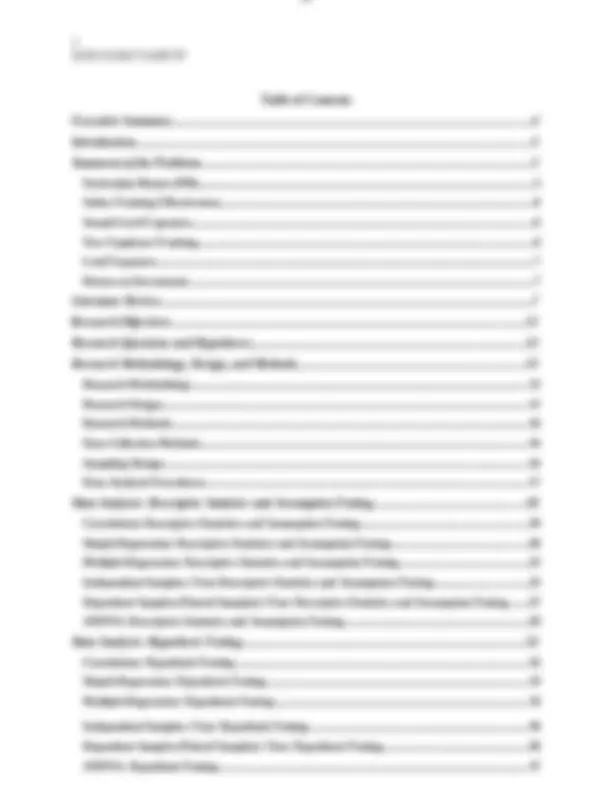

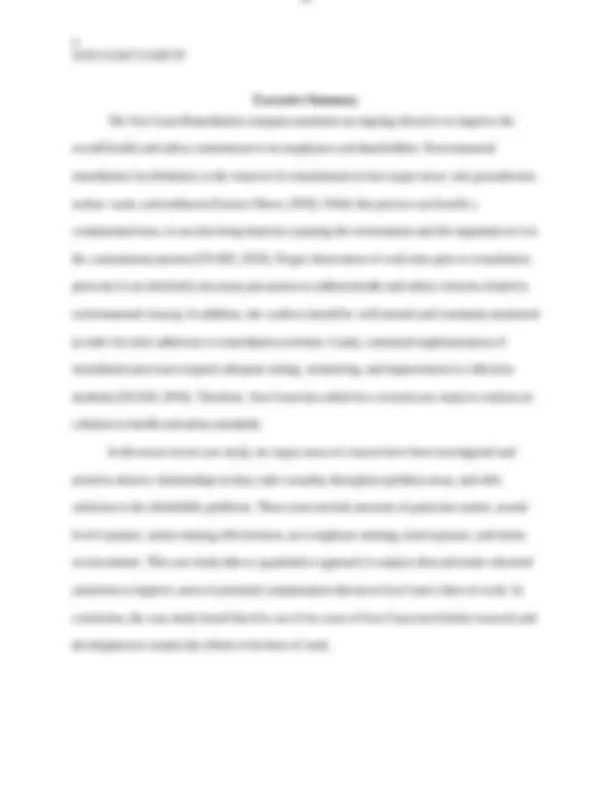
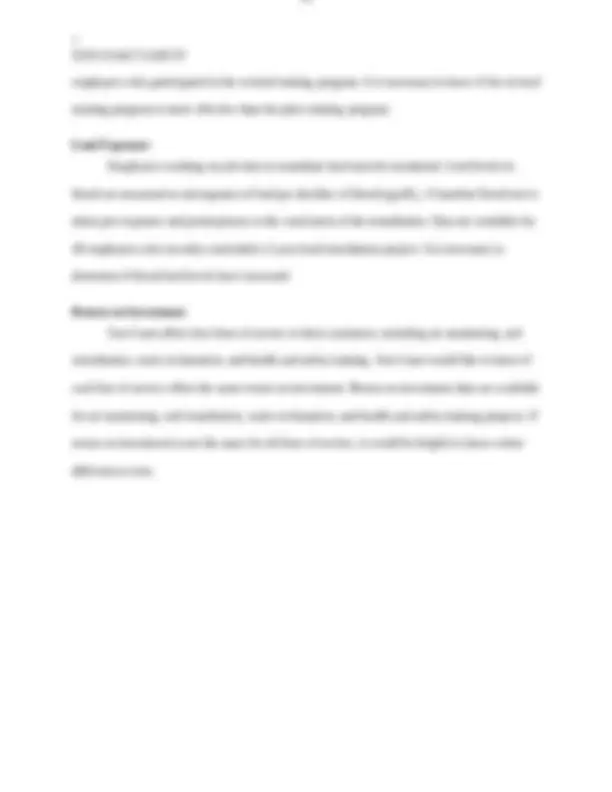
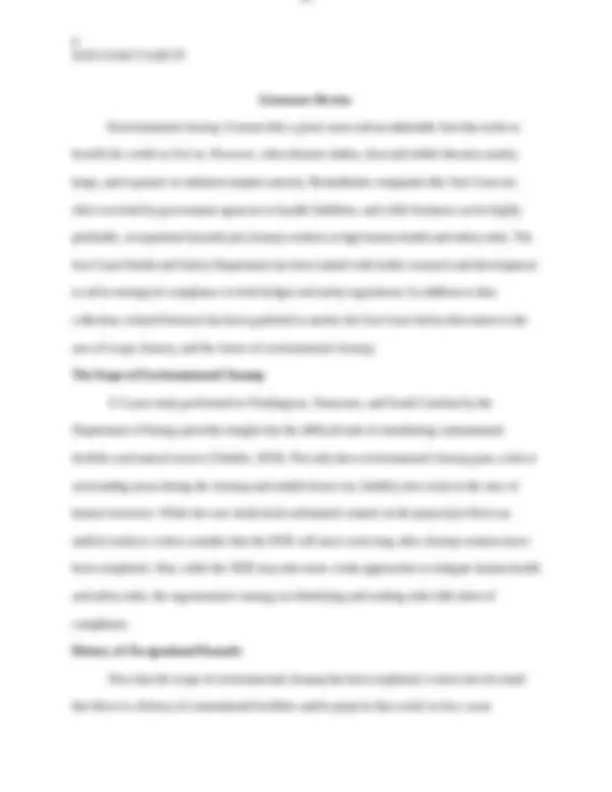
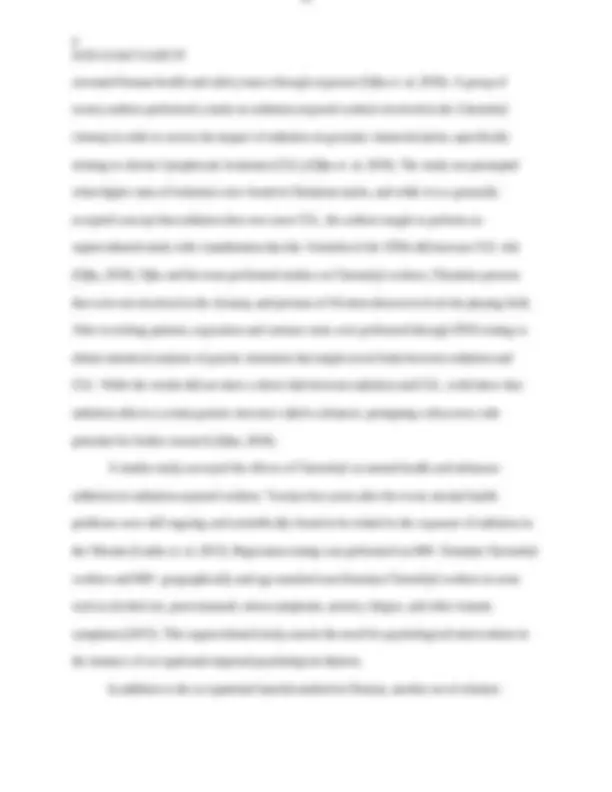
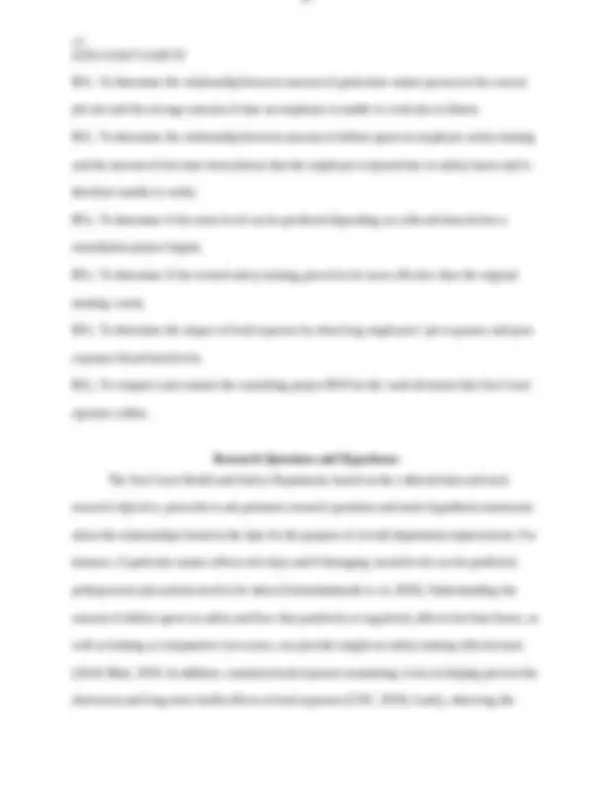
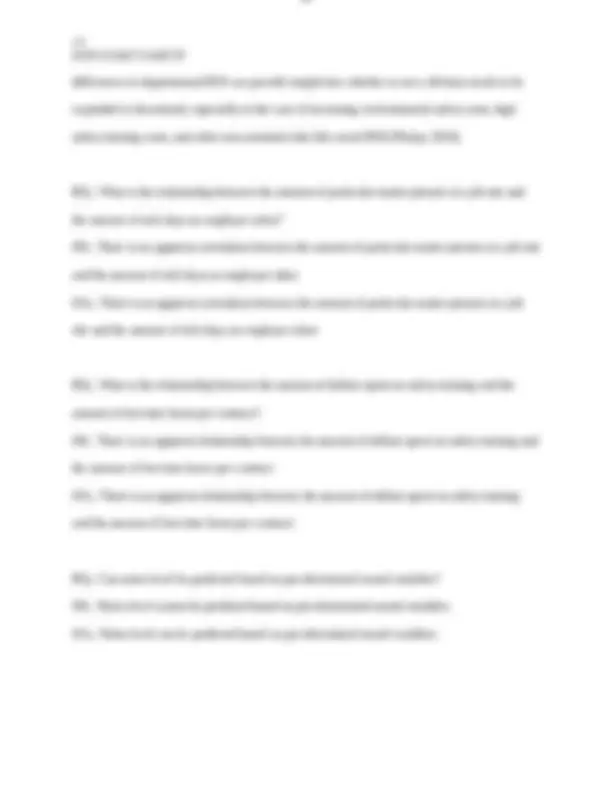
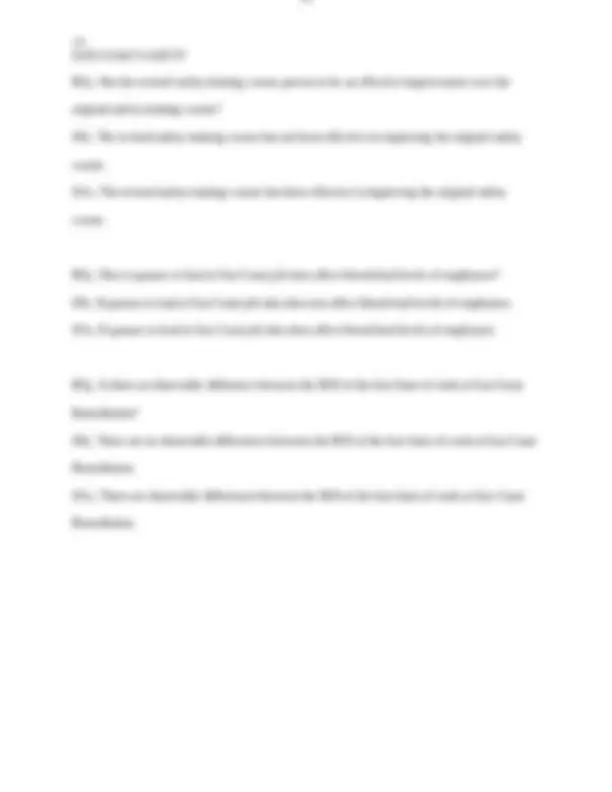
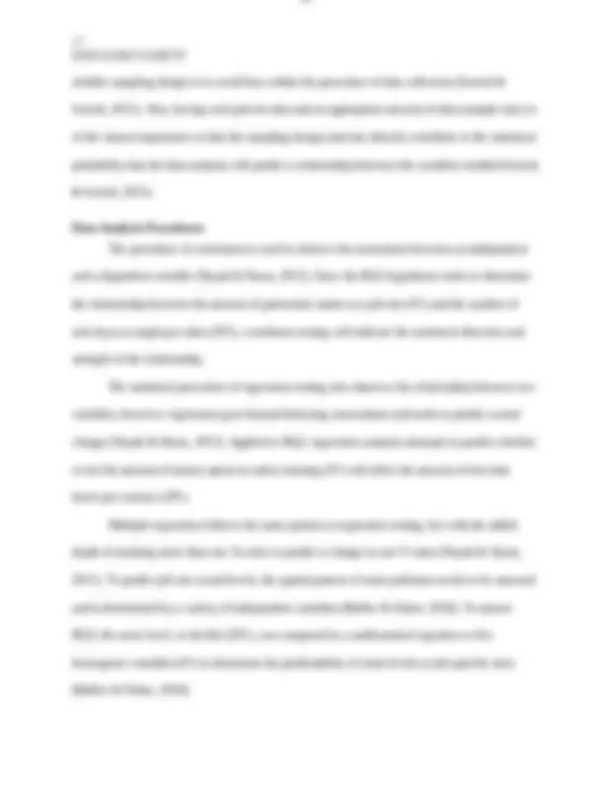
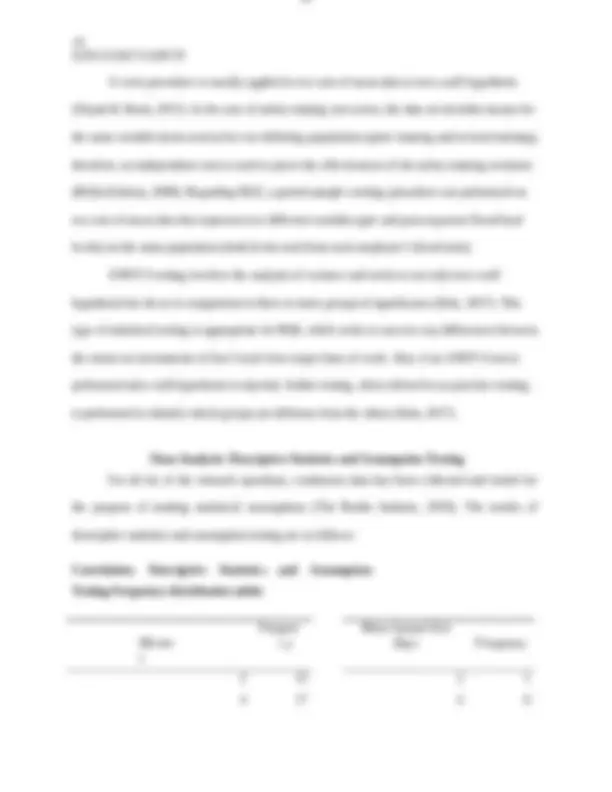
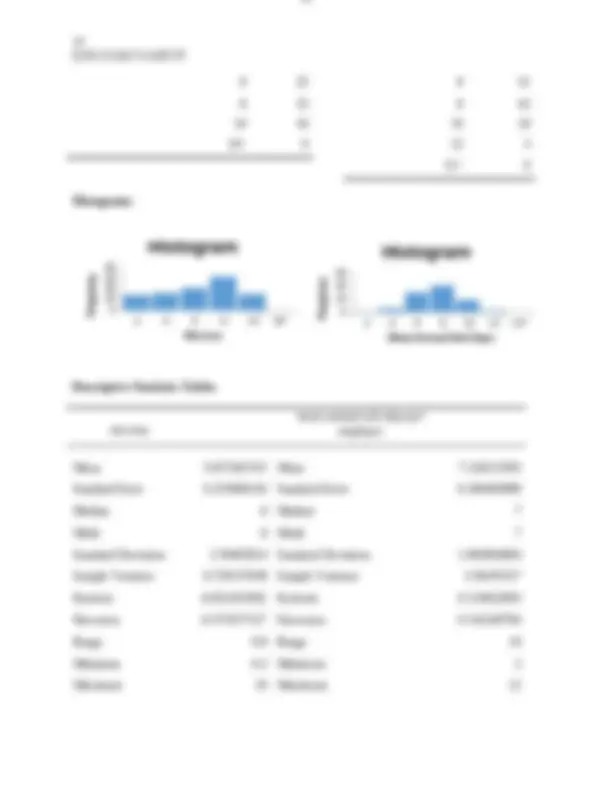
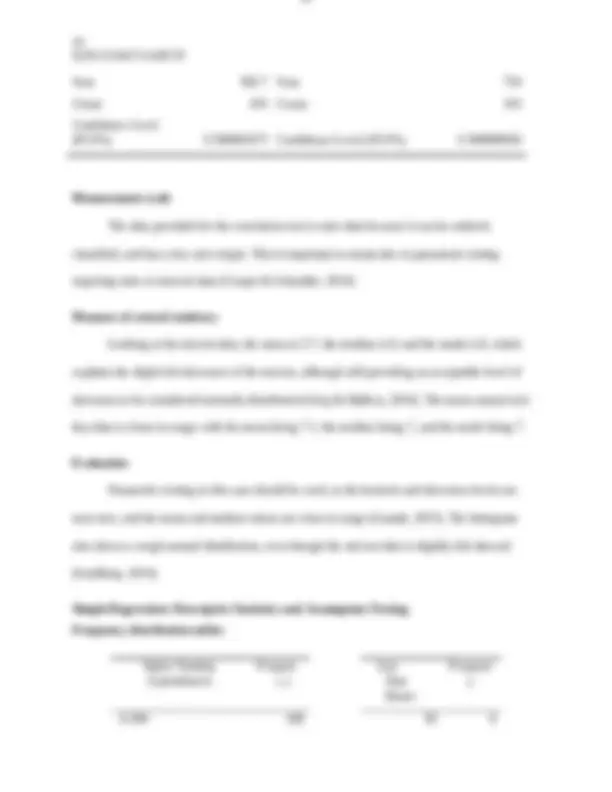
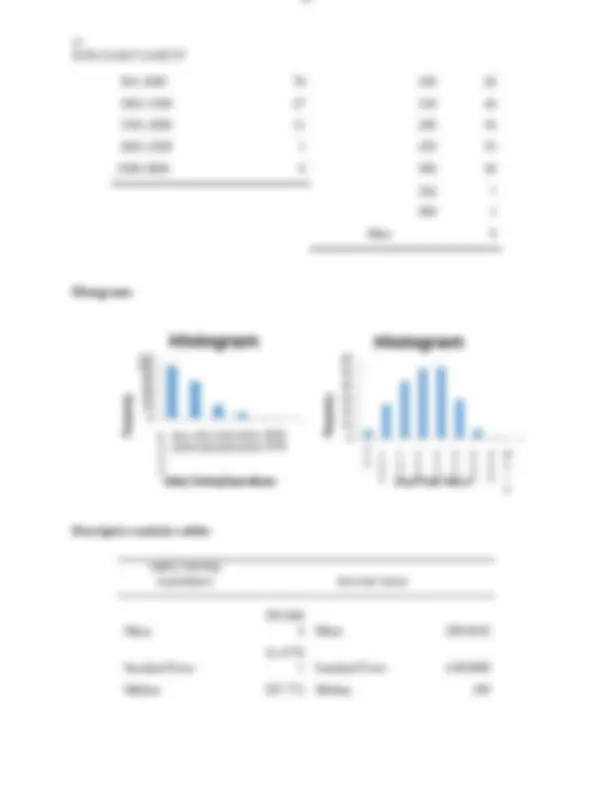
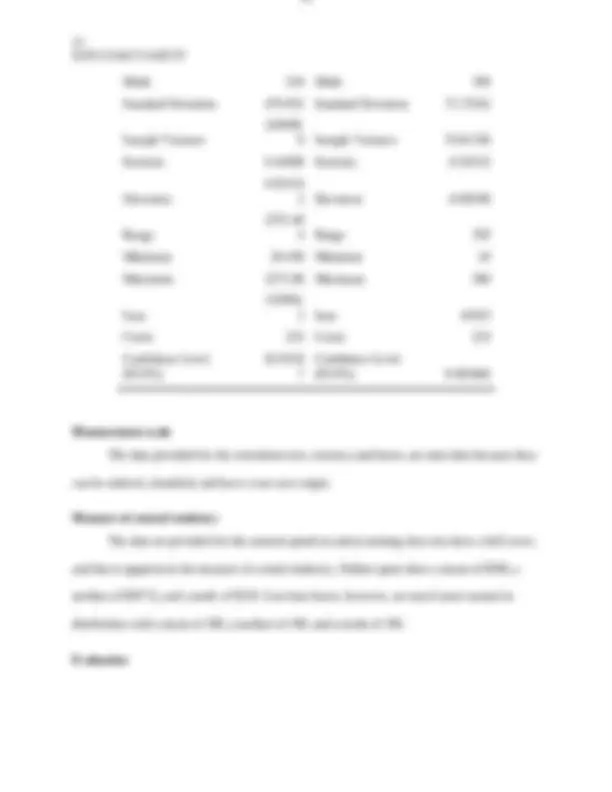
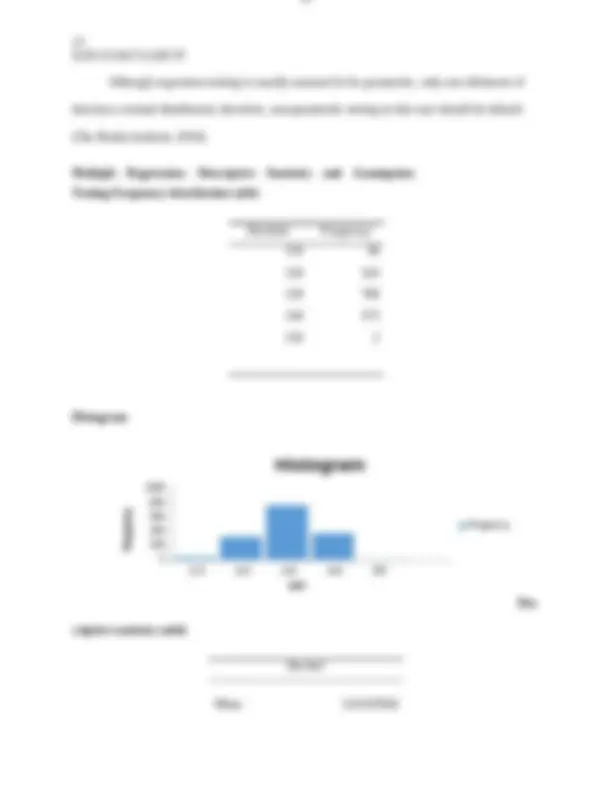
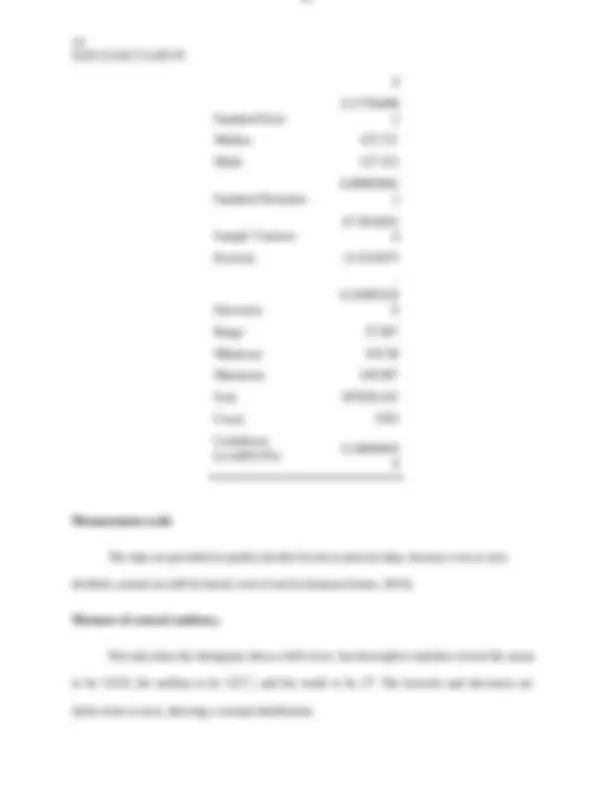
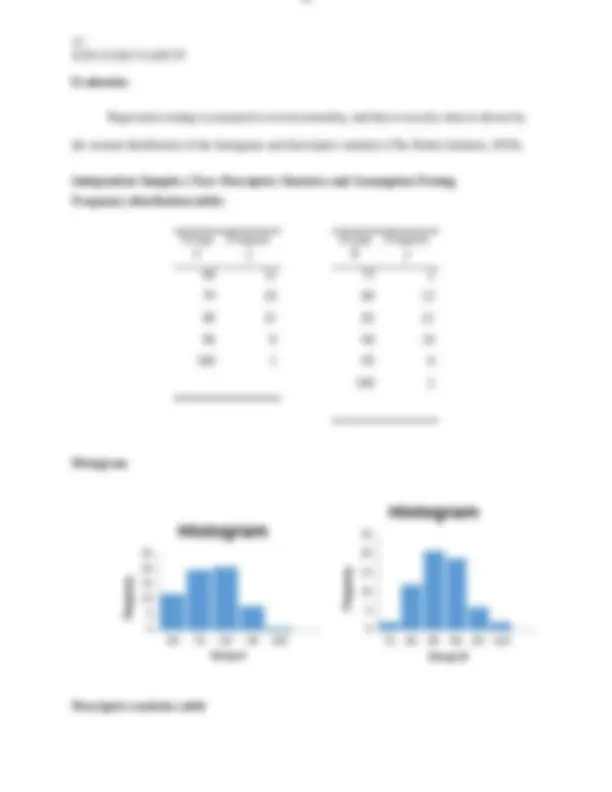
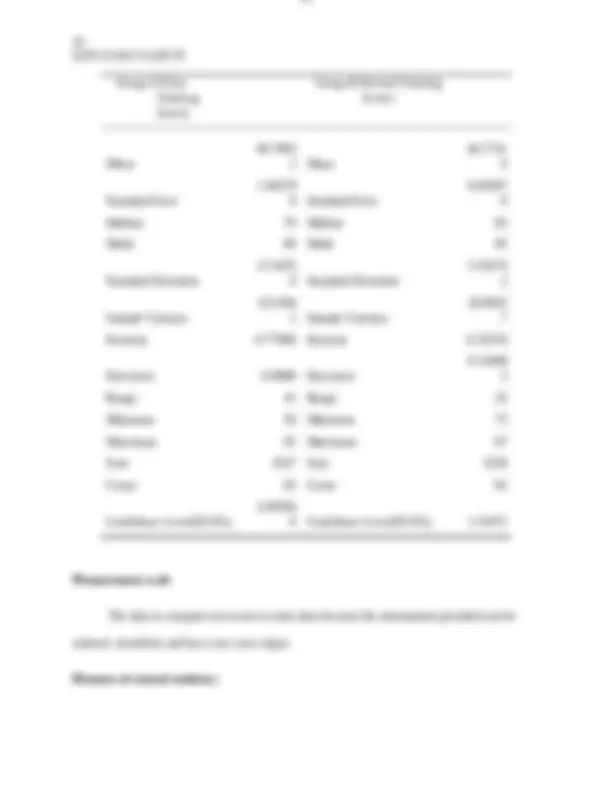
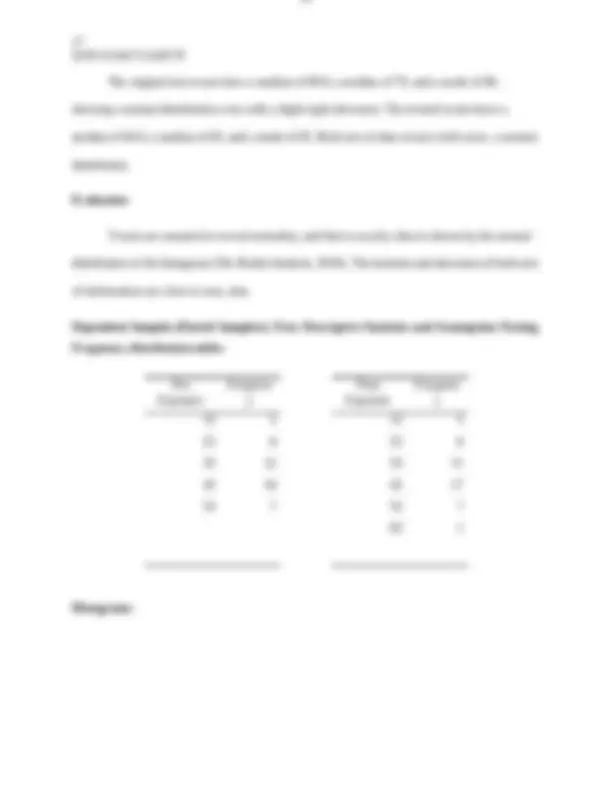
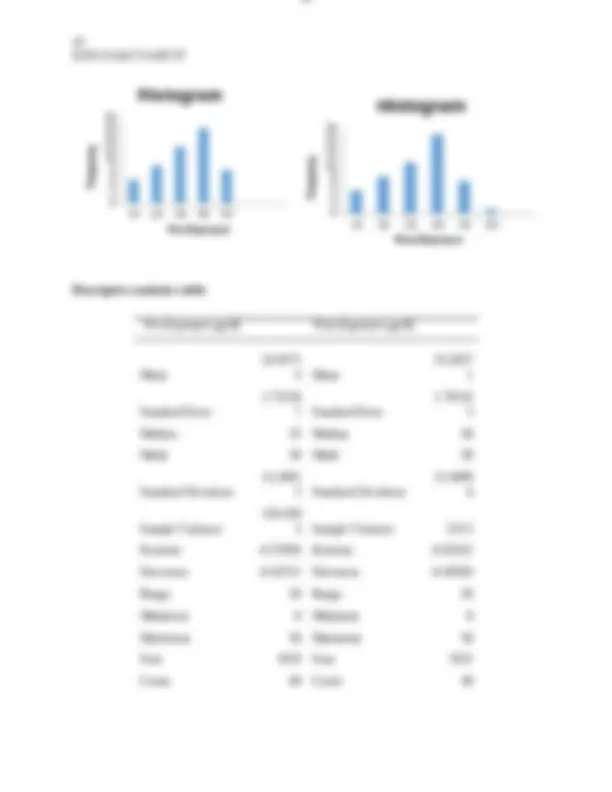
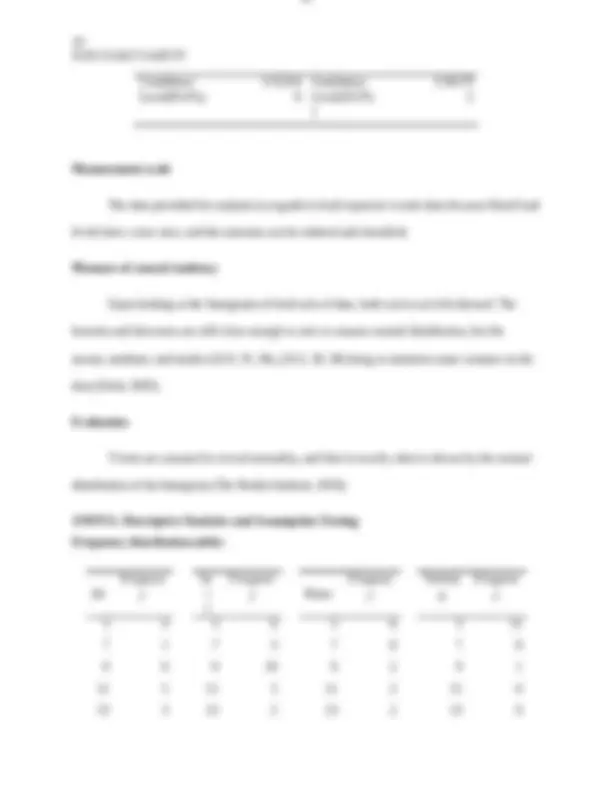
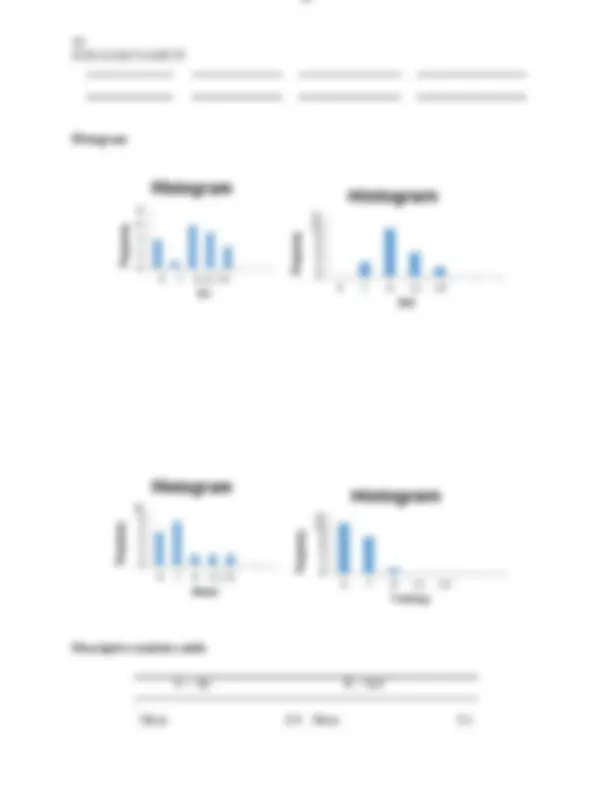
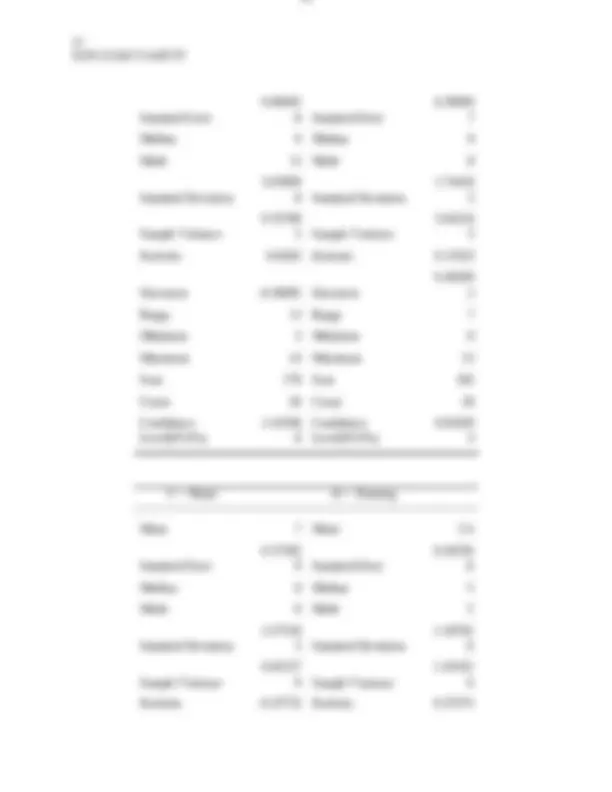
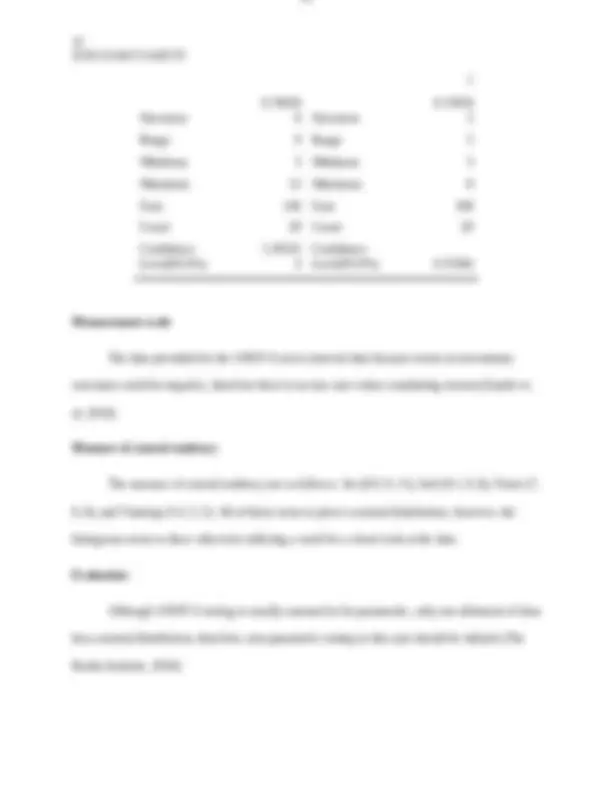
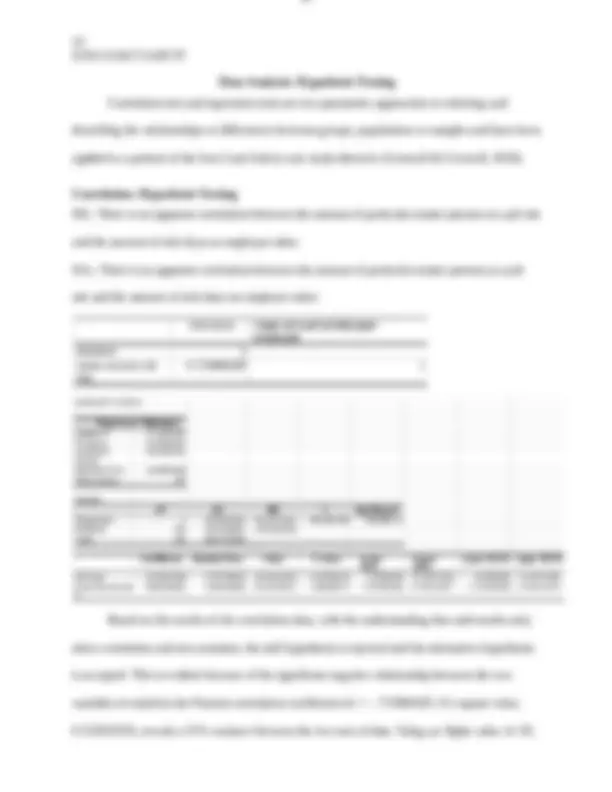
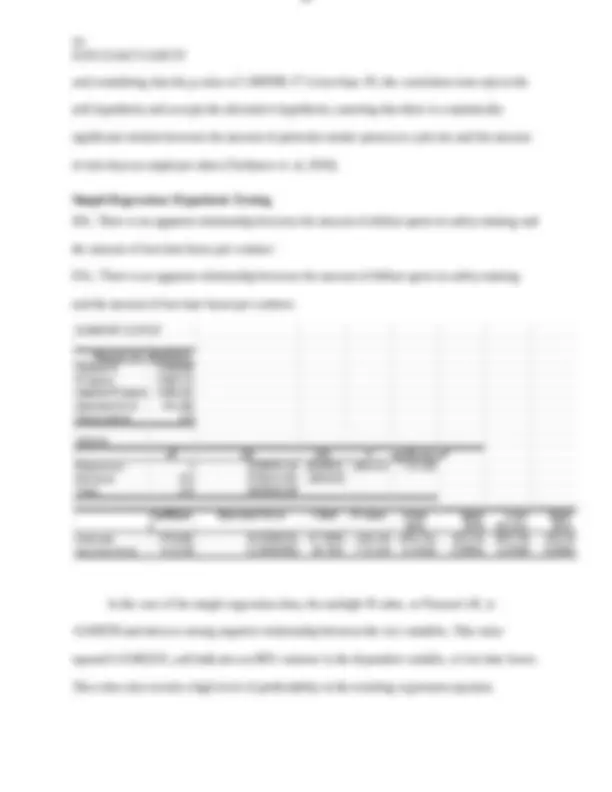
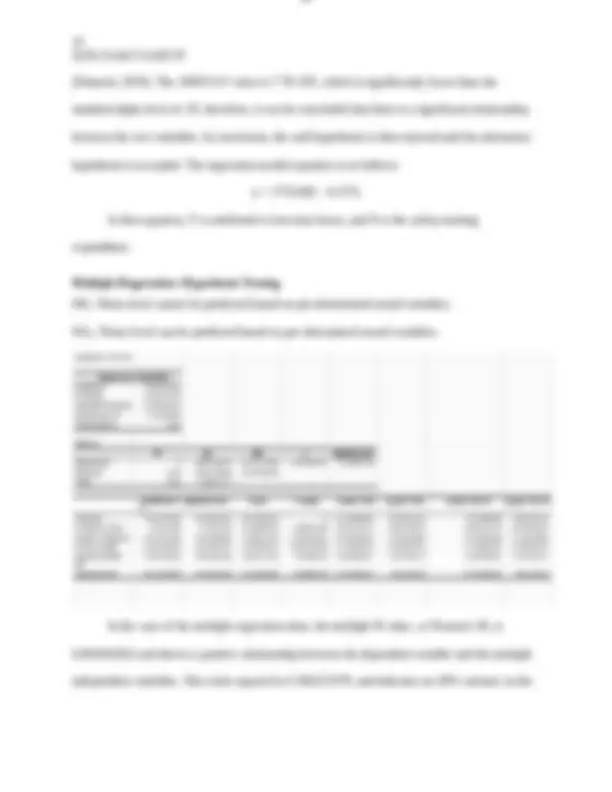
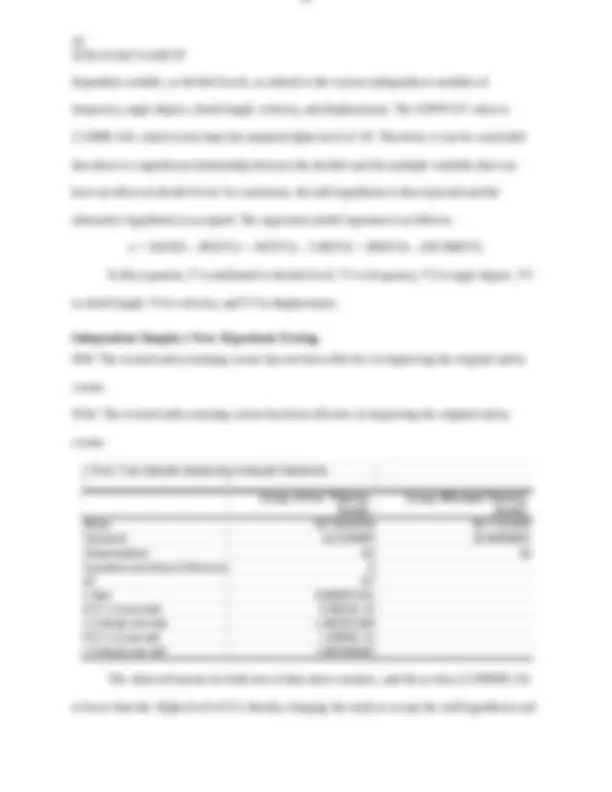
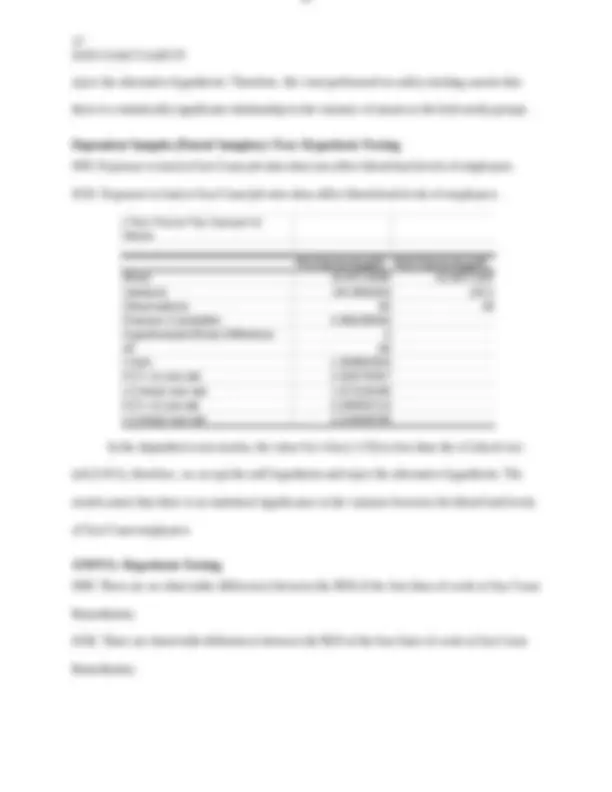
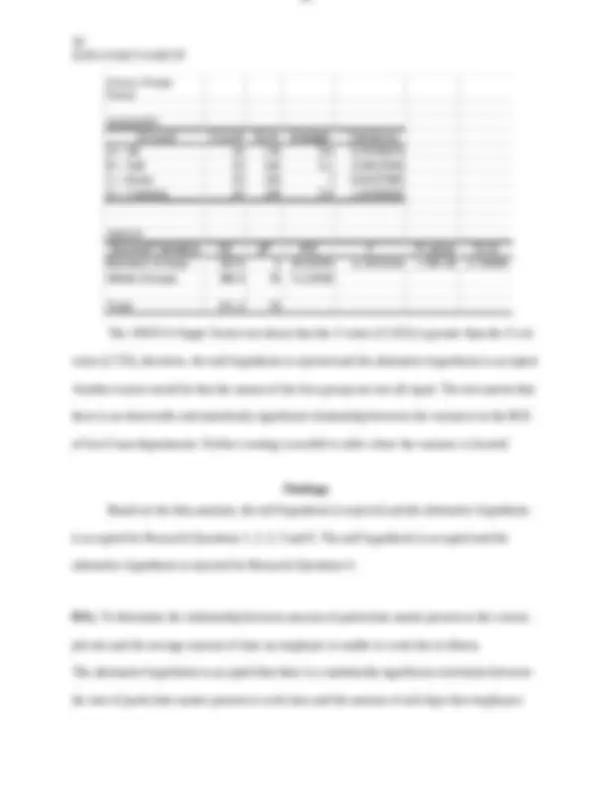
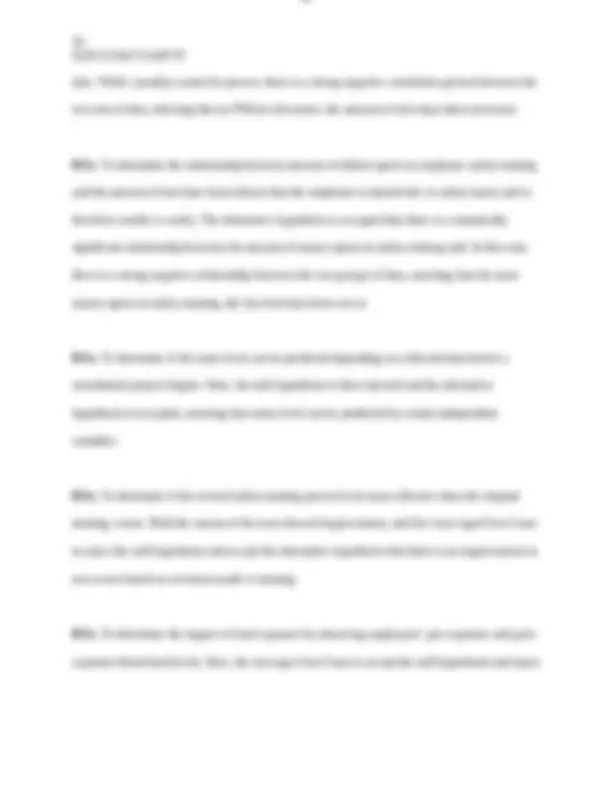
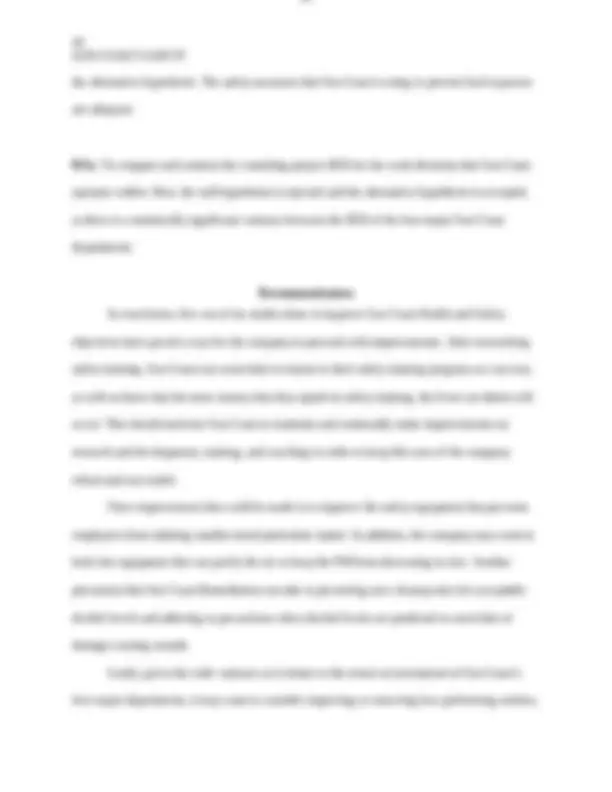
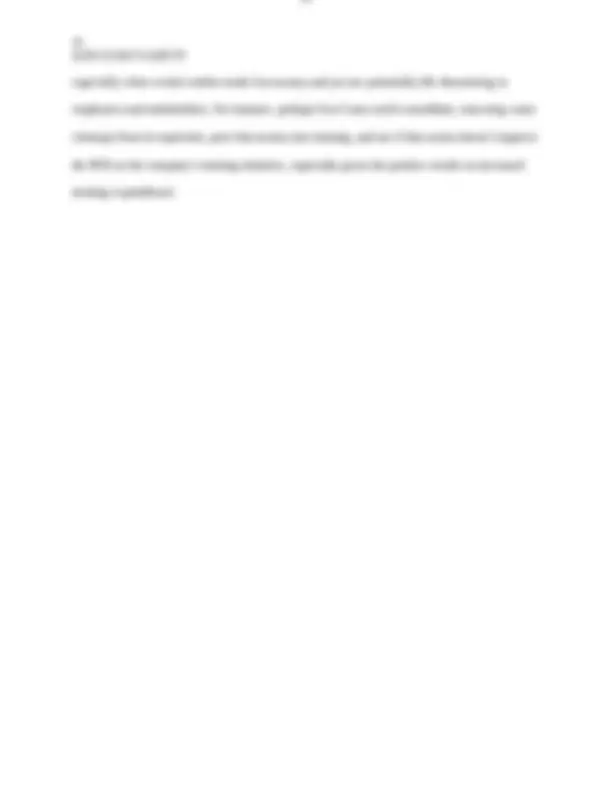
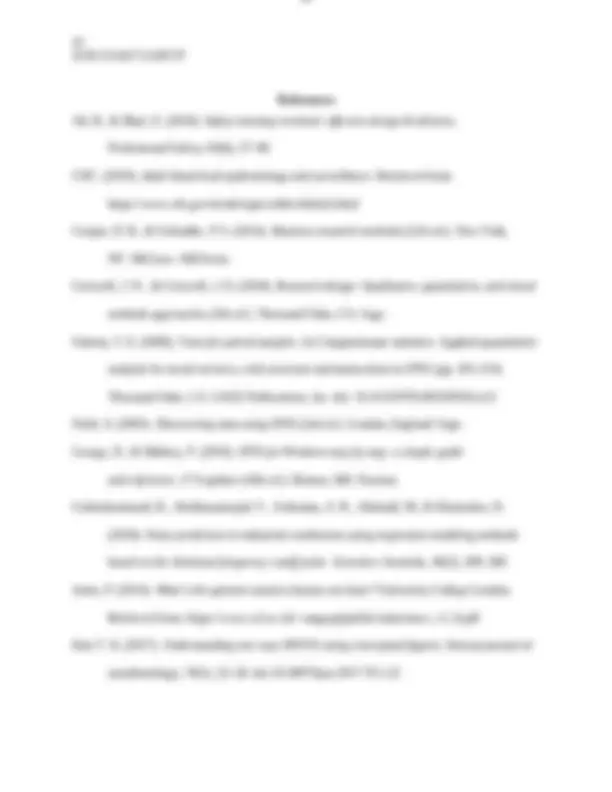
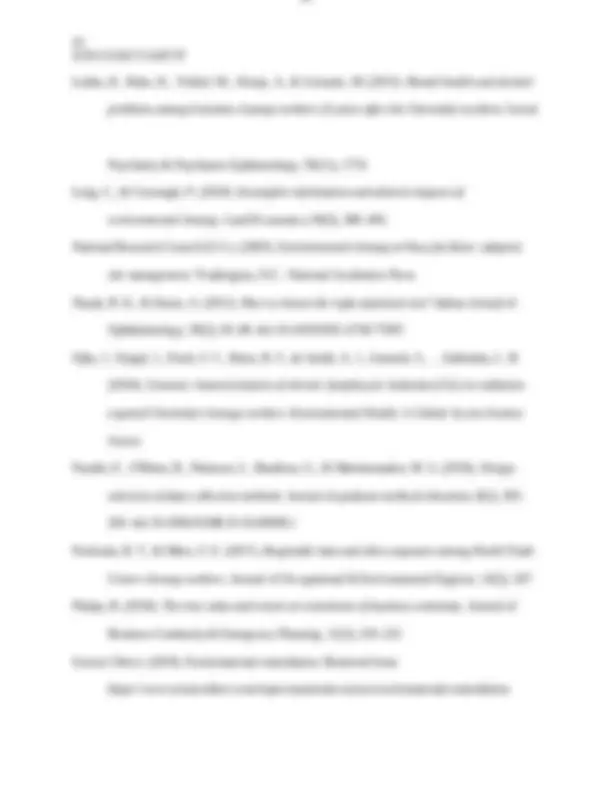
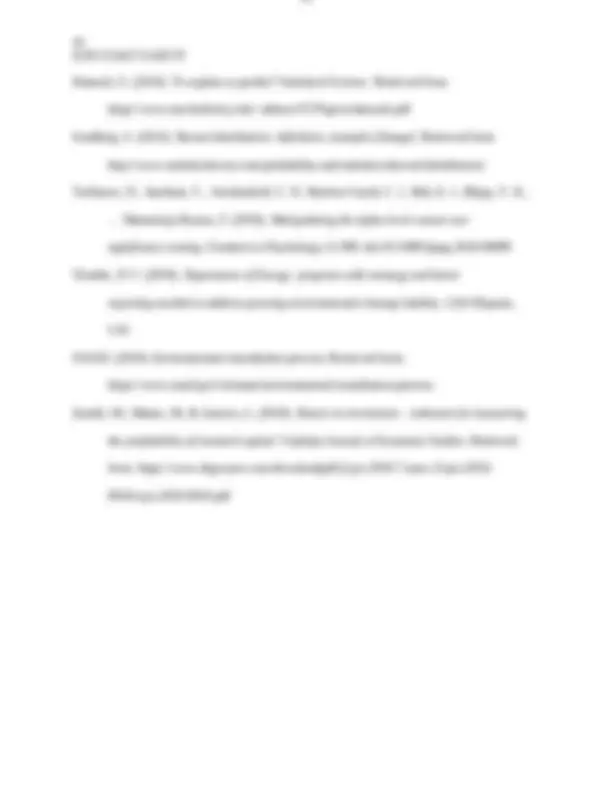


Study with the several resources on Docsity

Earn points by helping other students or get them with a premium plan


Prepare for your exams
Study with the several resources on Docsity

Earn points to download
Earn points by helping other students or get them with a premium plan
Community
Ask the community for help and clear up your study doubts
Discover the best universities in your country according to Docsity users
Free resources
Download our free guides on studying techniques, anxiety management strategies, and thesis advice from Docsity tutors
A case study conducted by sun coast on various health and safety concerns, including particulate matter, sound-level exposure, safety training effectiveness, new employee training, lead exposure, and return on investment. The study aims to identify problem areas and potential solutions through quantitative research methods such as observational research, action research, and hypothesis testing.
Typology: Assignments
1 / 45

This page cannot be seen from the preview
Don't miss anything!






































Running head: SUN COAST SAFETY 1 Sun Coast Safety Case Study Columbia Southern University
3 SUN COAST SAFETY Findings........................................................................................................................................ 38 Recommendations........................................................................................................................ 39 References.................................................................................................................................... 40
4 SUN COAST SAFETY Executive Summary The Sun Coast Remediation company maintains an ongoing directive to improve the overall health and safety commitment to its employees and shareholders. Environmental remediation, by definition, is the removal of contaminants in four major areas: soil, groundwater, surface water, and sediment (Science Direct, 2019). While this process can benefit a contaminated area, it can also bring harm by exposing the environment and the organisms in it to the contaminants present (USAID, 2019). Proper observation of work sites prior to remediation processes is an absolutely necessary precaution to address health and safety concerns related to environmental cleanup. In addition, site workers should be well-trained and constantly monitored in order for strict adherence to remediation activities. Lastly, continued implementation of remediation processes requires adequate testing, monitoring, and improvement to collection methods (USAID, 2019). Therefore, Sun Coast has called for a revised case study to confirm its cohesion to health and safety standards. In this most recent case study, six major areas of concern have been investigated and tested to observe relationships in data, infer causality throughout problem areas, and offer solutions to the identifiable problems. These areas include amounts of particular matter, sound- level exposure, safety training effectiveness, new employee training, lead exposure, and return on investment. This case study takes a quantitative approach to analyze data and make educated assertions to improve areas of potential contamination threats in Sun Coast’s lines of work. In conclusion, the case study found that five out of six areas of Sun Coast need further research and development to sustain the efforts of its lines of work.
6 SUN COAST SAFETY recorded in microns. Data are also available for average annual sick days per employee per job- site. Safety Training Effectiveness Health and safety training is conducted for each new contract that is awarded to Sun Coast. Data for training expenditures and lost-time hours were collected from 223 contracts. It would be valuable to know if training has been successful in reducing lost-time hours and, if so, how to predict lost-time hours from training expenditures. Sound-Level Exposure Sun Coast’s contracts generally involve work in noisy environments due to a variety of heavy equipment being used for both remediation and the clients’ ongoing operations on the job sites. Standard ear-plugs are adequate to protect employee hearing if the decibel levels are less than 120 decibels (dB). For environments with noise levels exceeding 120 dB, more advanced and expensive hearing protection is required, such as earmuffs. Historical data have been collected from 1,503 contracts for several variables that are believed to contribute to excessive dB levels. It would be important if these data could be used to predict the dB levels of work environments before placing employees on-site for future contracts. This would help the safety department plan for procurement of appropriate ear protection for employees. New Employee Training All new Sun Coast employees participate in general health and safety training. The training program was revamped and implemented six months ago. Upon completion of the training programs, the employees are tested on their knowledge. Test data are available for two groups: Group A employees who participated in the prior training program and Group B
7 SUN COAST SAFETY employees who participated in the revised training program. It is necessary to know if the revised training program is more effective than the prior training program. Lead Exposure Employees working on job sites to remediate lead must be monitored. Lead levels in blood are measured as micrograms of lead per deciliter of blood (μg/dL). A baseline blood test is taken pre-exposure and postexposure at the conclusion of the remediation. Data are available for 49 employees who recently concluded a 2-year lead remediation project. It is necessary to determine if blood lead levels have increased. Return on Investment Sun Coast offers four lines of service to their customers, including air monitoring, soil remediation, water reclamation, and health and safety training. Sun Coast would like to know if each line of service offers the same return on investment. Return on investment data are available for air monitoring, soil remediation, water reclamation, and health and safety training projects. If return on investment is not the same for all lines of service, it would be helpful to know where differences exist.
9 SUN COAST SAFETY unwanted human health and safety issues through exposure (Ojha et. al, 2018). A group of twenty authors performed a study on radiation-exposed workers involved in the Chernobyl cleanup in order to survey the impact of radiation on genomic characterization, specifically relating to chronic lymphocytic leukemia (CLL) (Ojha et. al, 2018). The study was prompted when higher rates of leukemia were found in Ukrainian males, and while it is a generally accepted concept that radiation does not cause CLL, the authors sought to perform an unprecedented study with consideration that the A-bombs of the 1950s did increase CLL risk (Ojha, 2018). Ojha and his team performed studies on Chernobyl workers, Ukrainian persons that were not involved in the cleanup, and persons of Western descent to level the playing field. After recruiting patients, regression and variance tests were performed through DNA testing to obtain statistical analysis of genetic mutations that might reveal links between radiation and CLL. While the results did not show a direct link between radiation and CLL, it did show that radiation affects a certain genetic structure called a telomere, prompting a discovery with potential for further research (Ojha, 2018). A similar study surveyed the effects of Chernobyl on mental health and substance addiction in radiation-exposed workers. Twenty-four years after the event, mental health problems were still ongoing and scientifically found to be related to the exposure of radiation in the Ukraine (Laidra et. al, 2015). Regression testing was performed on 600+ Estonian Chernobyl workers and 600+ geographically and age-matched non-Estonian Chernobyl workers in areas such as alcohol use, post-traumatic stress symptoms, anxiety, fatigue, and other somatic symptoms (2015). This unprecedented study asserts the need for psychological interventions in the instance of occupational-imposed psychological distress. In addition to the occupational hazards studied in Ukraine, another set of scholars
10 SUN COAST SAFETY pursued the effects of environmental exposure of workers involved in the cleanup of the World Trade Center in 2011. The study expounded upon inhalation injuries using OSHA-acquired data to prevent airborne exposure in future catastrophic building collapses (Pavilonis & Mirer, 2017). T-testing was performed to understand how certain variables contributed to exposure, such as job placement, time at job, date of job, respirator compliance, and air samples, all concerning crystalline silica exposure, which can lead to silicosis, lung cancer, tuberculosis, and COPD. The major consensus from this article asserted, similar to the GOA article, that safety precautions need to be as important as the job at hand, and that these precautions come from understanding the areas of risk and how to resolve such risks. The Future of Environmental Cleanup The consensus of the included literature is that while environmental cleanup is costly and risky, there is incomplete information as to the adverse impacts of such an occupational hazard. Over 450,000 physical structures in the United States that are considered to be brownfield buildings, which are physical landmarks contaminated with hazardous waste (Lang & Cavanagh, 2018). A regression-method study of these structures in Rhode Island asserts that while remediation benefits the property being remediated, it also harms health and safety and the market dynamics of the surrounding area (Lang & Cavanagh, 2018). The conclusion of the article challenges remediation programs to do better research on the negative impact of environmental cleanup before releasing funding towards a project that results in a present success at the expense of future degradation. Summary of Literature Review In summary, looking at the scope, the history, and the impact of environmental cleanup confirms that such a project can have long-term adverse impacts. Therefore, remediation
12 SUN COAST SAFETY RO 1 : To determine the relationship between amount of particulate matter present at the current job site and the average amount of time an employee is unable to work due to illness. RO 2 : To determine the relationship between amount of dollars spent on employee safety training and the amount of lost time hours (hours that the employee is injured due to safety issues and is therefore unable to work). RO 3 : To determine if the noise level can be predicted depending on collected data before a remediation project begins. RO 4 : To determine if the revised safety training proved to be more effective than the original training course. RO 5 : To determine the impact of lead exposure by observing employees’ pre-exposure and post- exposure blood lead levels. RO 6 : To compare and contrast the consulting project ROI for the work divisions that Sun Coast operates within.
The Sun Coast Health and Safety Department, based on the collected data and each research objective, proceeds to ask pertinent research questions and make hypothesis statements about the relationships found in the data for the purpose of overall department improvement. For instance, if particular matter affects sick days and if damaging sound levels can be predicted, perhaps more precautions need to be taken (Golmohammadi et. al, 2018). Understanding the amount of dollars spent on safety and how that positively or negatively affects lost time hours, as well as looking at comparative test scores, can provide insight on safety training effectiveness (Ali & Blair, 2018. In addition, consistent lead exposure monitoring is key in helping prevent the short-term and long-term health effects of lead exposure (CDC, 2019). Lastly, observing the
13 SUN COAST SAFETY differences in departmental ROI can provide insight into whether or not a division needs to be expanded or downsized, especially in the case of increasing environmental safety costs, high safety training costs, and other non-essential risks like social ROI (Phelps, 2018). RQ 1 : What is the relationship between the amount of particular matter present at a job site and the amount of sick days an employee takes? H0 1 : There is no apparent correlation between the amount of particular matter present at a job site and the amount of sick days an employee takes HA 1 : There is an apparent correlation between the amount of particular matter present at a job site and the amount of sick days an employee takes RQ 2 : What is the relationship between the amount of dollars spent on safety training and the amount of lost time hours per contract? H0 2 : There is no apparent relationship between the amount of dollars spent on safety training and the amount of lost time hours per contract HA 2 : There is an apparent relationship between the amount of dollars spent on safety training and the amount of lost time hours per contract. RQ 3 : Can noise-level be predicted based on pre-determined sound variables? H0 3 : Noise-level cannot be predicted based on pre-determined sound variables. HA 3 : Noise-level can be predicted based on pre-determined sound variables.
15 SUN COAST SAFETY
The following section paints a picture of the research methodology, design, and methods that Sun Coast remediation used as a blueprint that aids in answering the aforementioned research questions. The main goal of the overall health and safety study is to, following the tradition of positivism, measure collected data, determine cause and effect relationships between the variables studied, and present meaningful suggestions to improve company health and safety directives (Lee, J. S. K., 1992). Research Methodology In the area of health and safety, subjective emotion and reaction to circumstance is not appropriate in formulating hypotheses about an individual’s well-being. Therefore, the objective of data collection and the resulting hypotheses regarding Sun Coast health and safety directives require quantitative research methods due to the epistemological nature of the desired improvements to the program (Lee, J. S. K., 1992). Research Design The purpose of this case study is to infer causality amongst the variables present at Sun Coast remediation cleanup sites. Causality is difficult to prove, therefore, the data and explanations provided seek to make predictions for further safety precautions and determine task efficiencies (RanYwayZ, 2016). For Sun Coast to improve company health and safety directives, a variety of topics need to be explored and explained. Observing the data through explanatory research will enable Sun Coast to present identifiable problems and their subsequent solutions in the areas of particle and lead exposure, safety and employee training, return on investment, and sound level exposure.
16 SUN COAST SAFETY Research Methods To evaluate the performance of each sector that the Sun Coast Health and Safety Department is in charge of, the research methods used are mixed because each area of expertise presents a different problem and therefore requires a different solution. For instance, to measure the effect of revised training, action research was used to evaluate safety training improvement. The action of revising the training program was tested with post-program test scores, which can infer causality via implementation (RanYwayZ, 2016). Observational research was used to evaluate causality in the case of particulate matter and lead exposure, in comparing costs of safety training to lost time hours, and in predicting sound levels at job sites. In essence, actual experiments were not performed to compare non-issues to current issues, and while the data collected is predominantly quantitative and performed in the field, the source of the data is not experimental but rather observational in nature (RanYwayZ, 2016). Data Collection Methods Observational research design is a convenient way to collect overt, quantitative data in a field setting, therefore, the data collection method used in this directive is also observational in method (RanYwayZ, 2016). It is important to note that the work done in this health and safety study directly affects the everyday behavior and quality of life of the employees at Sun Coast remediation, therefore, the data collection method has everything do with how something has been done or allowed to be done in order to find ways to fix it and do it better. This mantra will provide the coherence needed throughout all design and methodology so that Sun Coast can arrive at the final stage of the research process: what to do next (Paradis et. al, 2016). Sampling Design Judgmental sampling, a non-probability sampling design, was used to collect the data due to the very specific nature of the required criteria (RanYwayZ, 2016). The purpose of a valid and
18 SUN COAST SAFETY A t-test procedure is usually applied to two sets of mean data to test a null hypothesis (Nayak & Hazra, 2011). In the case of safety training test scores, the data set includes means for the same variable (tests scores) for two differing populations (prior training and revised training), therefore, an independent t-test is used to prove the effectiveness of the safety training revisions (RQ4) (Faherty, 2008). Regarding RQ5, a paired sample t-testing procedure was performed on two sets of mean data that represent two different variables (pre and post-exposure blood lead levels) on the same population (both levels read from each employee’s blood tests). ANOVA testing involves the analysis of variance and seeks to not only test a null hypothesis but do so in comparison to three or more groups of significance (Kim, 2017). This type of statistical testing is appropriate for RQ6, which seeks to uncover any differences between the return on investments of Sun Coast's four major lines of work. Also, if an ANOVA test is performed and a null hypothesis is rejected, further testing, often referred to as post-hoc testing, is performed to identify which groups are different from the others (Kim, 2017).
For all six of the research questions, continuous data has been collected and tested for the purpose of making statistical assumptions (The Roslin Institute, 2016). The results of descriptive statistics and assumption testing are as follows: Correlation: Descriptive Statistics and Assumption Testing Frequency distribution tables Micron s Frequen c y Mean Annual Sick Days Frequency 2 15 2 1 4 17 4 6
19 SUN COAST SAFETY 6 22 6 31 8 33 8 42 10 16 10 19 10+ 0 12 3 12+ 0 Histograms Histogram 40 30 20 10 0 2 4 6 8 10 10+ Microns Histogram 60 40 20 0 2 4 6 8 10 12 12+ Mean Annual Sick Days Descriptive Statistics Tables microns mean annual sick days per employee Mean 5.657281553 Mean 7. Standard Error 0.255600143 Standard Error 0. Median 6 Median 7 Mode 8 Mode 7 Standard Deviation 2.59405814 Standard Deviation 1. Sample Variance 6.729137636 Sample Variance 3. Kurtosis -0.852161902 Kurtosis 0. Skewness -0.373257127 Skewness 0. Range 9.8 Range 10 Minimum 0.2 Minimum 2 Maximum 10 Maximum 12 Frequency Frequency